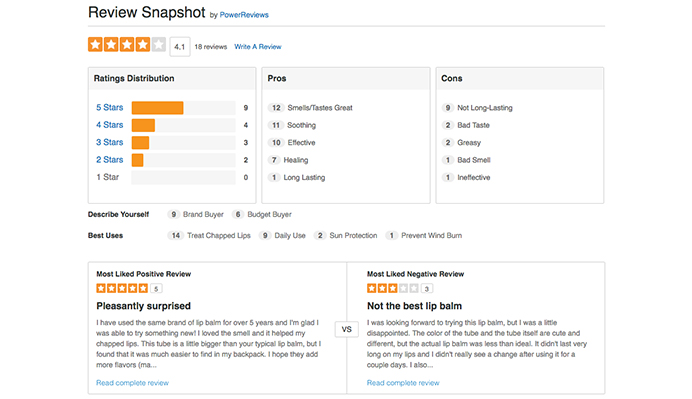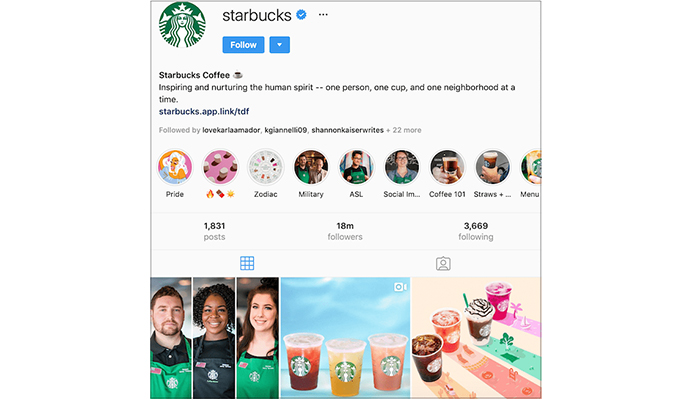Table of Contents
In an era where consumers are more discerning and digitally connected than ever, a revolution has quietly unfolded in the marketing world: Direct-to-Consumer (DTC or D2C).
Historically, many brands relied on third party retailers to help sell and distribute their products. Brands often had to sell their products at a deep discount while surrendering a degree of control over their marketing strategy. The compromise constrained their ability to establish direct connections with consumers.
Direct to Consumer marketing has surged in popularity among consumer goods, propelled by the explosive growth of the internet and online shopping. It allows businesses to cut out the middleman, enabling them to target, market, sell, and distribute directly to their customers.
It’s a paradigm shift that empowers brands to redefine the rules of engagement, leveraging technology and innovation to create unparalleled customer experiences in the modern commerce landscape.
In this complete guide, we will delve into what Direct-to-Consumer (DTC) marketing is, its benefits, strategies, examples, and impact.
What Is Direct-to-Consumer Marketing (DTC)
DTC marketing is a business strategy where companies sell their products or services directly to consumers, bypassing traditional retail intermediaries like brick-and-mortar stores or third-party distributors. The brand takes full control of various aspects of the customer journey, including product development, pricing, marketing, sales, and distribution.
The following benefits characterize it:
1. Direct Sales to Consumers
DTC brands streamline their sales process by directly offering products or services to consumers. They leverage multiple platforms such as eCommerce websites, social media, email marketing, and even their physical stores to establish a direct connection with customers.
This approach bypasses traditional intermediaries like retailers or wholesalers, allowing brands to maintain better control over their brand image, pricing, and customer relationships.
By cutting out middlemen, DTC brands offer competitive pricing, personalized experiences, and quicker feedback loops, ultimately enhancing their ability to meet consumer demands and preferences effectively.
2. Brand Control
DTC businesses have total control over crucial facets of their brand. Direct to Customer marketing promotes branding, including preserving a strong brand identity, enforcing product quality standards, figuring out price plans, and developing specialized marketing techniques.
With this kind of influence, they can protect the integrity of their brand and ensure that it continuously reflects their ethos and appeals to their target market.
DTC companies may fine-tune their messaging, quickly react to market changes, and quickly respond to client input by avoiding intermediaries.
This independence encourages a flexible and customer-focused strategy that addresses changing consumer expectations and encourages long-lasting brand loyalty.
3. Data-Driven Insights
Data-driven insights are essential to the success of direct-to-consumer (DTC) marketing. Brands get important insights into consumer behavior, preferences, and purchase behaviors through rigorous data collection and analysis across numerous customer touchpoints.
One data-driven strategy these companies use to comprehend their clients’ preferences and satisfaction levels is customer reviews. Additionally, they learn about the weaknesses and strengths of their companies.

This knowledge informs strategic choices, from creating highly focused marketing efforts to customizing products. Using these analytics, DTC brands may improve client engagement, offerings, pricing tactics, and even forecast trends.
The technological advancements in the field of Artificial Intelligence can be utilized for effective data analysis. AI and ML can quickly analyse large amounts of data and effectively identify customer behaviours and preferences. Businesses utilize this data to tailor better direct to consumer marketing strategies to gain profit.
In addition to ensuring a more customized and enjoyable customer experience, this data-centric strategy allows brands to remain flexible, respond quickly to market changes, and keep a competitive edge in the ever-changing environment of consumer preferences.
4. Customer-Centric Approach
These brands are committed to a customer-centric strategy and highly value developing enduring relationships with their clients. They are exceptional in customizing experiences, providing first-rate customer service and prompt assistance.
This coordinated approach raises consumer satisfaction and encourages steadfast loyalty. These businesses can also drive repeat business and helpful word-of-mouth recommendations by understanding and catering to individual requirements and preferences.
Businesses can create tailored product recommendations using Artificial Intelligence and Machine Learning by collecting customer preferences from previous shopping patterns from direct-to-consumer platforms. This will give businesses ideas on what products to recommend to each customer and how to tailor marketing messages.
This constant commitment to customer-centricity strengthens brand reputation, fosters trust, and positions DTC businesses as reliable partners in meeting the wants and demands of their clients.
5. Innovative Product Offerings
DTC companies are known for their ability to push the boundaries of product innovation. By bypassing traditional distribution channels and intermediaries, they have the agility to respond rapidly to market trends and consumer feedback.
This means they can introduce unique, niche, or customized products that cater to specific consumer segments. They thrive on a customer-centric approach, using data-driven insights to identify emerging needs and preferences.
As a result, they can bring frequent product updates and innovations to market, keeping their offerings fresh, appealing, and in tune with the ever-evolving demands of their target audience.
6. Digital Marketing Expertise
This paradigm has mastered digital marketing, employing various strategies and techniques to interact and reach its target audience directly. They use social media advertising, content marketing, search engine optimization (SEO), and email marketing to establish a strong online presence.
DTC businesses can target their targeted clients, customize their messaging, and enhance their online presence by utilizing various digital channels wisely.
They can effectively engage with customers thanks to this experience, and they can also quickly adjust to shifting online trends and consumer behaviour, giving them a competitive advantage in the digital space.
7. Subscription Models
Many Direct-to-Consumer (DTC) brands leverage subscription-based models to create recurring revenue streams and cultivate long-term customer relationships. By offering products or services through subscriptions, they provide customers with convenience, cost savings, or exclusive perks.
This approach stabilizes revenue and fosters loyalty, as subscribers often commit to the brand for an extended period, becoming brand advocates and ambassadors.
8. Transparent Pricing
These companies prioritize transparent pricing structures, ensuring that customers clearly understand the value they receive in exchange for their money. This transparency builds trust and credibility with consumers, as they can make informed purchasing decisions.
By openly disclosing pricing details, DTC brands demonstrate their commitment to fairness and honesty, which are essential for building strong relationships with customers and loyalty.
9. Agile Operations
DTC brands operate with agility, allowing them to make swift adjustments in response to market dynamics or customer feedback. This flexibility is crucial for staying competitive and meeting evolving consumer expectations.
Whether adapting product offerings, fine-tuning marketing strategies, or optimizing supply chains, Direct to Consumer business model can quickly pivot to address changing circumstances, ensuring they remain responsive and relevant in a dynamic business landscape.
10. Community Building
Building online communities and interacting with potential customers via social media, forums, and user-generated content are frequent components of DTC marketing. This feeling of belonging encourages clients to feel more connected to the business, boosting brand loyalty and promoting word-of-mouth advertising.
These brands develop areas where customers can share experiences, lend support, and champion the brand naturally by building a community of like-minded people, ultimately enhancing their market presence and customer relationships.
Direct-to-Consumer Marketing Strategies
DTC marketing strategies can be used individually or in combination to engage with customers directly and build a loyal customer base. Direct-to-consumer marketing usually follows the key elements of marketing known as the Marketing mix or the Four Ps (Product, Price, Place, Promotion). This strategy allows companies to create a marketing approach that meets customers’ preferences. The product quality should be the best and align with the customer’s preferences. Secondly, the pricing strategies are determined considering the cost of production, market demand, brand values, etc., and should also meet the customer’s expectations. The location from where the product can be purchased should be easily accessible to consumers. Finally, promotion refers to marketing activities like advertising to reach potential customers. This strategy is a consolidated approach that meets the overall business model.
The choice of strategy depends on the brand’s target audience, industry, and goals.
Here are some of the DTC marketing strategies to employ in your store:
1. eCommerce Website and Online Store
This approach enables brands to directly engage with consumers by selling their products online. A prime example is Warby Parker, a renowned eyewear brand. They utilize their website as a platform for customers to explore and purchase prescription glasses and sunglasses.

Notably, customers can virtually try on various frames before making a purchase, enhancing the online shopping experience. This strategy eliminates the need for intermediaries and fosters a direct relationship between the brand and its customers, ultimately driving sales and brand loyalty in a digital marketplace.
2. Subscription Services
Subscription services are a potent DTC marketing strategy, leveraging recurring revenue streams and fostering long-term customer relationships.
Brands offer subscription-based models, providing customers with products at regular intervals, whether it’s monthly, quarterly, or otherwise. To achieve success with this strategy, businesses must focus on personalization and convenience.
Tailoring subscription offerings to individual preferences and needs helps retain customers. Furthermore, ensuring a seamless and user-friendly online sign-up process, offering flexibility in subscription plans, and providing exceptional customer support is crucial.
Consistent product quality, timely deliveries, and periodic value additions through exclusive offers or content also play pivotal roles in building customer loyalty and sustaining subscription growth.
3. Social Media Advertising
Social media advertising is a cornerstone of DTC marketing, offering a direct avenue to engage with a broad audience. To maximize results, brands should concentrate on key strategies such as precise audience targeting, compelling content creation, utilization of diverse ad formats, A/B testing for optimization, active engagement with users, and data-driven campaign adjustments.
Various social media advertisement options are available, including Facebook, Instagram, Twitter, LinkedIn, Pinterest, Snapchat, and TikTok, each tailored to specific audience demographics and preferences.
Starbucks maintains a vibrant and engaging presence on platforms like Instagram, Twitter, and Facebook. They regularly share aesthetically pleasing images of their coffee products, seasonal specials, and creative latte art, enticing followers with visually appealing content.
Starbucks also encourages user-generated content through campaigns like #StarbucksForLife, where customers share their Starbucks experiences for a chance to win rewards.

Effective DTC social media advertising necessitates an agile approach, staying attuned to evolving trends, platforms, and audience behaviors while upholding brand consistency.
4. Content Marketing and Blogging
Content marketing and blogging are fundamental DTC marketing strategies that revolve around creating and disseminating valuable and informative content to engage and educate your target audience.
It’s crucial to put your audience at the forefront of your content creation process. Understand their pain points, interests, and questions, then develop content that directly addresses their needs and offers valuable solutions.
Consistency is key; maintain a regular posting schedule to keep your audience engaged and coming back for more. Consistency also helps establish your brand as a dependable source of information.
Quality should always take precedence over quantity; prioritize well-researched and well-designed content that resonates with your audience and provides actionable insights. Furthermore, SEO optimization is essential; employ relevant keywords and optimize your content for search engines to enhance discoverability and drive organic traffic to your website.
You should promote your content across various channels, including social media and email marketing, and consider leveraging influencers and partnerships to extend your reach. Actively engage with your audience, encouraging comments, feedback, and discussions on your blog to foster a sense of community and trust.
5. Email Marketing
Email marketing is a potent DTC strategy for nurturing customer relationships and maximizing engagement. In order to achieve optimal results, start by segmenting your email list based on customer behavior, preferences, and demographics.
This allows you to send highly personalized and relevant content to different groups, increasing the likelihood of conversion. You should focus on personalization. Craft emails that address recipients by their names and recommend products or content based on their past interactions with your brand.
Experiment with A/B testing to determine the most effective subject lines, content formats, and send times, continuously refining your approach. Ensure your emails are mobile-optimized for a seamless experience, as majority of users check emails on their smartphones.
It is good to incorporate clear and compelling calls-to-action (CTAs) that guide recipients toward desired actions, such as making a purchase or signing up.
Regularly analyze email campaign performance metrics like open rates, click-through rates, and conversion rates to inform your strategy and improve over time. Always adhere to email marketing regulations and best practices to ensure legal compliance and ethical practices in your email marketing efforts.
6. Referral and Affiliate Programs
Referral and affiliate programs are powerful marketing strategies employed by companies to harness the influence of their existing customers, partners, or affiliates in expanding their customer base and driving sales.
These programs operate on a quid pro quo basis, where individuals are incentivized to promote the company’s products or services in exchange for rewards, commissions, or other benefits.
An exemplary instance of this strategy is Airbnb’s well-executed referral program. In this program, Airbnb users are encouraged to refer friends to the platform. When these referred friends make their first booking, both the referrer and referee receive travel credits, fostering a win-win scenario.
This approach not only capitalizes on the trust and personal connections among friends but also leverages the power of word-of-mouth marketing. It transforms satisfied customers into brand advocates, creating a viral effect as the referred individuals may, in turn, become referrers themselves.
By implementing referral and affiliate programs effectively, businesses can tap into existing networks and amplify their reach. These programs also provide a cost-effective means of customer acquisition, as rewards are only distributed upon successful conversions, making it a mutually beneficial strategy for both the company and its advocates.
Additionally, such programs can enhance customer loyalty, as participants are often more engaged with the brand due to the rewards and recognition they receive, ultimately resulting in sustainable business growth.
7. Customer Reviews and User-Generated Content
Customer reviews and user-generated content are potent tools in DTC marketing, fostering trust and influencing purchasing decisions. Encouraging customers to share their experiences and opinions not only provides valuable feedback but also builds credibility.
Amazon prominently displays customer reviews and ratings for products across its platform. These reviews offer genuine feedback, allowing shoppers to assess the quality, reliability, and suitability of products before making a purchase.

8. Personalization and Recommendation Engines
Personalization and recommendation engines are effective direct-to-consumer (DTC) marketing techniques that use data-driven algorithms to customize product recommendations for specific customers.
Brands create a customized buying experience by examining customer behavior, preferences, and previous interactions. Netflix is a good example of how this method is used to suggest movies and TV series to users based on their viewing habits and likes.
This strategy improves customer pleasure while also boosting engagement and retention. Brands may dramatically increase sales and consumer loyalty by providing pertinent and enticing options, which also streamlines the purchasing process and fosters a stronger bond between customers and the brand.
9. Flash Sales and Limited-time Offers
Flash sales and limited-time offers are effective DTC marketing tactics that are carefully planned to create a sense of urgency among customers and compel them to act right away.
For optimal results, brands should entice their audience with compelling incentives, create a genuine scarcity by limiting availability, and transparently communicate the time constraints. They should offer details across various marketing channels and ensure mobile optimization for a seamless experience in order to achieve the best results with these strategies.
These limited-time offers can be made more appealing and relevant by being advertised across all pertinent channels and tailored to particular client segments.
Conclusion
This complete guide has delved into the essence of DTC marketing and its tailored advantages.
These benefits encompass direct sales channels, heightened brand control, data-driven insights for an enhanced customer experience, a customer-centric ethos that prioritizes you, innovation tailored to your preferences, and digital marketing expertise aimed at capturing your attention.
Additionally, they include convenient subscription models, transparent pricing, adaptable operations catering to your evolving preferences, and community-building to foster a sense of belonging.
Diverse DTC marketing strategies underpin the success of this model, including DTC eCommerce websites, subscription services, social media advertising, content marketing, blogging, and email campaigns for information dissemination. These strategies also encompass loyalty-driven referral and affiliate programs, customer reviews to guide your decisions, personalized experiences, exciting flash sales, and refreshing limited-time offers.
In this era of savvy and digitally connected consumers, Direct-to-Consumer (DTC) marketing emerges as a transformative force for businesses. It empowers them to establish direct connections with their customers.
Acowebs are the developers of WooCommerce Dynamic Pricing the best way to add discounts based on a range of unconditional and considerable criterias to set with a sophisticated user interface which makes your efforts much easier. discount rules for woocommerce also comes with Percentage / Fixed price discounts.











 Login
Login
 Cart
Cart








